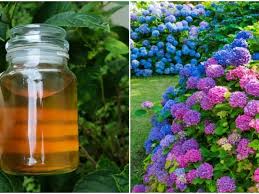Hydrangeas are a stunning addition to any garden, celebrated for their lush foliage and striking, round flower heads. However, getting these plants to bloom to their full potential can sometimes be challenging. While proper general care is important, the secret to achieving the largest, most vibrant blossoms lies in understanding how and when to fertilize your hydrangeas. With the right fertilization techniques, you can enhance your blooms like never before!
Chemical vs. Organic Fertilizer: Which is Better?
Both synthetic and organic fertilizers have their advantages, and choosing the best one depends on your preferences. Synthetic fertilizers are often more concentrated, which can result in quicker, more noticeable results. However, organic fertilizers are gentler on the soil and contribute to long-term soil health. The decision ultimately comes down to your gardening goals and whether you prioritize fast growth or soil sustainability.
Key Nutrients for Bigger Hydrangea Blooms
To encourage lush, large blooms, hydrangeas need three main nutrients: nitrogen, phosphorus, and potassium. These are often referred to as NPK, and each plays a unique role:
- Nitrogen (N) promotes overall plant growth.
- Phosphorus (P) encourages strong root development and, most importantly, supports flower formation.
- Potassium (K) helps with overall plant health and resilience.
For the best results, choose a fertilizer that contains all three nutrients in a balanced ratio, with an emphasis on phosphorus, which is critical for blooming.

How Often Should You Fertilize?
Consistency is key when fertilizing hydrangeas for optimal blooming. After your plant has begun budding, apply your chosen fertilizer—ideally one that contains a balanced 10-20-10 NPK ratio—every 7 to 14 days. This will provide a steady supply of nutrients to support vigorous flowering.
Finding the Right Nutrient Ratio
When selecting a fertilizer for bigger blooms, look for one with a higher phosphorus content. A fertilizer with a ratio of 10-20-10 (or similar) means twice as much phosphorus as nitrogen or potassium, which is ideal for encouraging flowers. The extra phosphorus will give your hydrangeas the boost they need to produce larger, more vibrant blooms.
Additional Tips for Success
Even the best fertilizer can only do so much if your hydrangeas aren’t in the right conditions. Start by choosing a hydrangea cultivar that suits your garden’s climate. Not all varieties thrive in every environment, so make sure to pick one that matches your local conditions.
Before planting, ensure your soil is properly prepared and fertilized. Additionally, ongoing care is essential: hydrangeas need plenty of sunlight, the right amount of water, and some shade, depending on the variety.
By combining the right fertilizer with optimal care and suitable planting conditions, you’ll be well on your way to enjoying the biggest, most beautiful hydrangea blooms your garden has ever seen!
